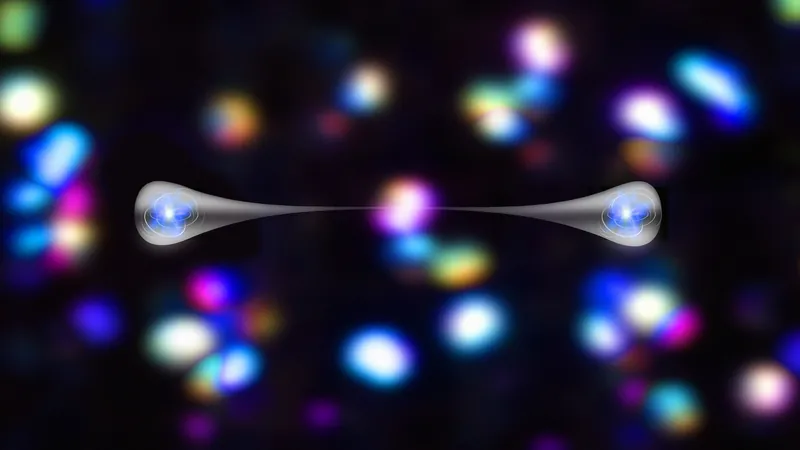
Revolutionary Quantum Leap: Scientists Achieve 'Hyper-Entanglement' Using Laser Tweezers
2025-05-30
Author: Sarah
In a stunning breakthrough, physicists have harnessed the power of laser light to manipulate individual atoms, achieving a state known as quantum 'hyper-entanglement.' This innovative technique stands to revolutionize quantum computing and enhance simulations that probe the very foundations of physics.
Researchers at Caltech have delved into the world of optical tweezers, utilizing them for decades to control atoms, which has previously led to remarkable developments such as quantum error correction and the creation of ultra-precise atomic clocks.
A persistent challenge in this field has been the unintended impact of atomic motion, often seen as a source of noise within quantum systems. However, in a groundbreaking study published in *Science*, this issue has been transformed into a strength by the researchers.
Postdoctoral researcher Adam Shaw remarked, "We show that atomic motion, typically seen as disruptive, can actually enhance our capabilities." Instead of viewing atomic movement as problematic, Shaw and his team have flipped the script to create hyper-entangled groups of atoms.
What sets hyper-entanglement apart from traditional entanglement is its capacity to enable atoms to share multiple properties simultaneously, a leap forward in quantum mechanics.
During their experiments, the Caltech team successfully correlated both the motion and electronic states of atom pairs simultaneously, an impressive accomplishment that promises more efficient processing of quantum information. Professor Manuel Endres, co-lead author of the study, stated, "This allows us to encode more quantum information per atom, generating more entanglement with fewer resources."
To reach this hyper-entangled state, the researchers devised a novel technique to cool an alkaline earth atom with zero charge, utilizing detection and active correction to almost freeze its motion. The next step involved inducing pendulum-like oscillations in two directions simultaneously, achieving a superposition state where particles display contradictory properties.
By aligning these oscillating atoms with partners that mirrored their movements, the team successfully created hyper-entanglement that also reflected their electronic states.
Endres emphasized that their aim was to explore the limits of atomic control: "We are essentially building a toolbox. We've mastered the ability to control electrons within atoms, and now we've learned to manage their overall motion—like a finely-tuned atomic toy."
The ramifications of this discovery are profound, with the potential to entangle even more atomic properties. Endres noted that motional states could be pivotal for advancements in quantum technology ranging from computation to simulation and precision measurement.


 Brasil (PT)
Brasil (PT)
 Canada (EN)
Canada (EN)
 Chile (ES)
Chile (ES)
 Česko (CS)
Česko (CS)
 대한민국 (KO)
대한민국 (KO)
 España (ES)
España (ES)
 France (FR)
France (FR)
 Hong Kong (EN)
Hong Kong (EN)
 Italia (IT)
Italia (IT)
 日本 (JA)
日本 (JA)
 Magyarország (HU)
Magyarország (HU)
 Norge (NO)
Norge (NO)
 Polska (PL)
Polska (PL)
 Schweiz (DE)
Schweiz (DE)
 Singapore (EN)
Singapore (EN)
 Sverige (SV)
Sverige (SV)
 Suomi (FI)
Suomi (FI)
 Türkiye (TR)
Türkiye (TR)
 الإمارات العربية المتحدة (AR)
الإمارات العربية المتحدة (AR)